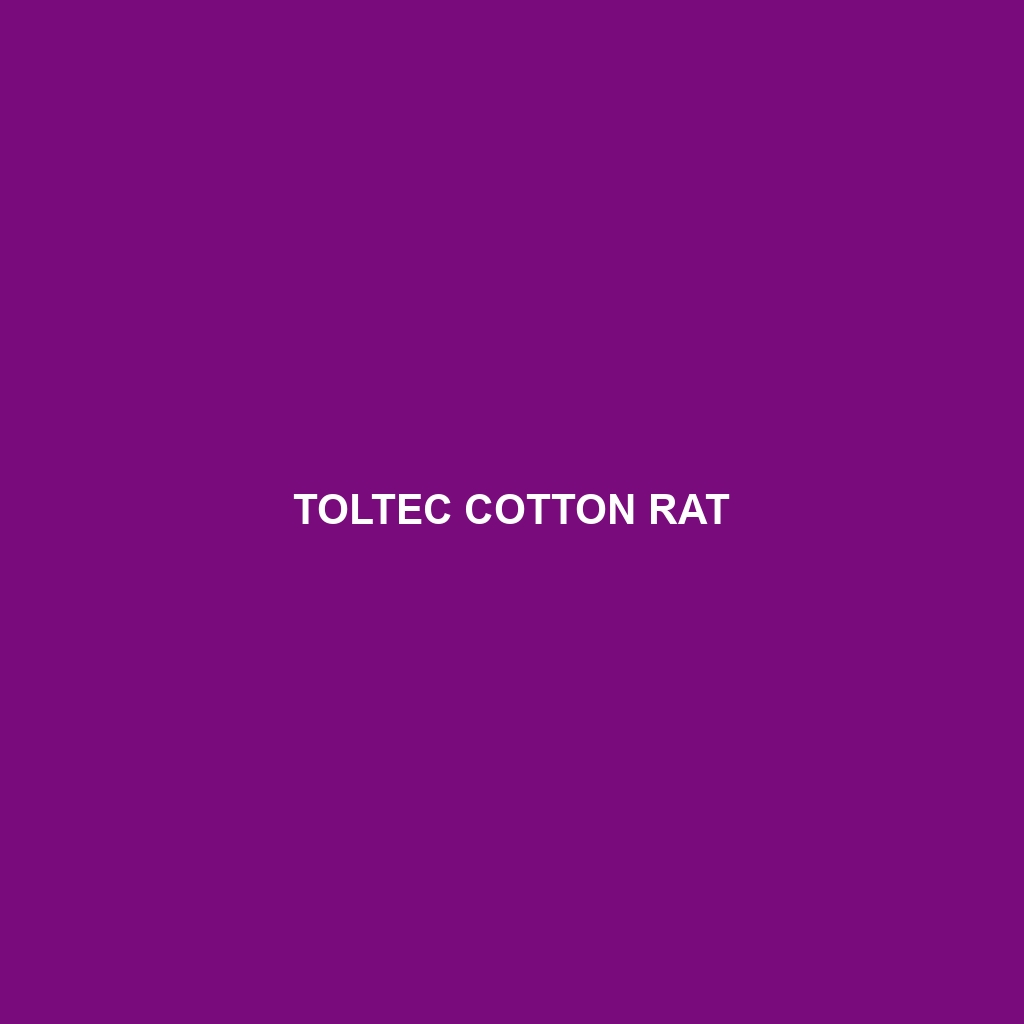Toltec Cotton Rat Species Description
Common Name: Toltec Cotton Rat
Scientific Name: Sigmodon toltecus
Habitat
The Toltec Cotton Rat primarily inhabits the grasslands and wetlands of Mexico, particularly in highland regions. They are commonly found in areas with dense vegetation, including marshes and low-lying floodplains, where they can easily construct burrows. Their range extends from the central plateau to the southwestern parts of Mexico, making them an essential part of the local ecosystem.
Physical Characteristics
Toltec Cotton Rats are medium-sized rodents, typically measuring between 20 to 30 centimeters in length, excluding their tail. Their fur is generally a blend of brown and gray, providing excellent camouflage among the grasses they inhabit. Notable features include a robust body, elongated snout, and small ears. Their tails are shorter than their bodies, covered in fine hair, and are typically darker at the base.
Behavior
These rodents are primarily nocturnal, exhibiting peak activity during the night. Toltec Cotton Rats are known for their social structure; they often live in colonies, where individuals communicate through a series of vocalizations. They are agile swimmers and can often be observed foraging near water bodies, where they search for food and avoid predators. Their burrowing habits create complex underground networks that provide essential shelter.
Diet
The diet of the Toltec Cotton Rat primarily consists of grasses, seeds, and aquatic plants. They exhibit herbivorous feeding habits, favoring young shoots and tender vegetation, which are abundant in their wetland habitats. During periods of food scarcity, they are known to consume roots and tubers, showcasing their adaptability as foragers.
Reproduction
Toltec Cotton Rats breed multiple times throughout the year, with peak breeding periods occurring during the spring and summer months. A female typically gives birth to litters of 3 to 6 offspring, after a gestation period of about 22 to 25 days. Newborns are altricial, meaning they are born blind and helpless, relying heavily on their mother for care in the initial weeks.
Conservation Status
The Toltec Cotton Rat is currently classified as vulnerable due to habitat loss and degradation, primarily from agricultural expansion and urbanization. Conservation efforts are necessary to protect their natural habitats and ensure the survival of this species.
Interesting Facts
One fascinating aspect of the Toltec Cotton Rat is its remarkable adaptability to varying environmental conditions. This rodent not only thrives in wetland areas but can also be found in drier grasslands. Additionally, their intricate burrowing systems play a critical role in aerating the soil and supporting local flora.
Role in Ecosystem
The Toltec Cotton Rat plays an important role in its ecosystem as both a herbivore and prey species. Their feeding habits aid in seed dispersal, promoting plant diversity. As a food source for larger predators, including birds of prey and carnivorous mammals, they contribute to the balance of the food chain within their habitat.
